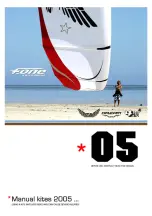
C
IRRUS
D
ESIGN
S
ECTION
7: A
IRPLANE
AND
S
YSTEMS
SR20
F
UEL
S
YSTEM
P/N 11934-005
7-39
Fuel System
A 56-gallon usable wet-wing fuel storage system provides fuel for engine
operation. The system consists of a 29.3-gallon capacity (28 gallon usable)
vented integral fuel tank and a fuel collector/sump in each wing, a three
position selector valve, an electric fuel pump, and an engine-driven fuel
pump. Fuel is gravity fed from each tank to the associated collector sumps
where the engine-driven fuel pump draws fuel through a filter and selector
valve to pressure feed the engine fuel injection system. The electric fuel
pump is provided for engine priming and as an emergency backup for the
engine-driven fuel pump.
Each integral wing fuel tank has a filler cap in the upper surface of each
wing for fuel servicing. Access panels in the lower surface of each wing
allow access to the associated wet compartment (tank) for inspection and
maintenance. Float-type fuel quantity sensors in each wing tank supply fuel
level information to the fuel quantity gauges. Positive pressure in the tank
is maintained through a vent line from each wing tank. Fuel, from each
wing tank, gravity feeds through strainers and a flapper valve to the associ-
ated collector tank in each wing. Each collector tank/sump incorporates a
flush mounted fuel drain and a vent to the associated fuel tank.
The engine-driven fuel pump pulls filtered fuel from the two collector tanks
through a three-position (LEFT-RIGHT-OFF) selector valve. The selector
valve allows tank selection. From the fuel pump, the fuel is metered to a
flow divider, and delivered to the individual cylinders.
A dual-reading fuel quantity gauge is located in plain view of the pilot.
An analog electronic fuel quantity gauge is located on the Engine Strip
along the left edge of the MFD and in the Fuel Qty block on the MFD’s
Engine page.
Fuel shutoff and tank selection is positioned nearby for easy access.
Fuel system venting is essential to system operation. Blockage of the system
will result in decreasing fuel flow and eventual engine fuel starvation and
stoppage. Venting is accomplished independently from each tank by a vent
line leading to a NACA-type vent mounted in an access panel underneath
the wing near each wing tip.
The airplane may be serviced to a reduced capacity to permit heavier cabin
loadings. This is accomplished by filling each tank to a tab visible below the
fuel filler, giving a reduced fuel load of 13.0 gallons usable in each tank (26
gallons total usable in all flight conditions).
Reissue A
















































